The Circle Swing for the perfect hit
– April 22, 2022 | Text Scott Cranfield

For over 25 years, I have taught an approach I call “Linking Mind & Body”. This approach is based on true laws of how the human mind and body function, which means, when applied, your golf swing will feel natural and uncomplicated and, maybe most important of all, repeatable!
This article will introduce you to the concept I call “The Circle Swing”. It can be helpful to look at the golf swing as three circles: the clubhead, the hands and the body. I will show you how to bring these three circles into perfect harmony, thus providing you with not only consistent timing but also great mechanics to hit solid shots, and with the real win being it will feel natural, i.e., no complicated swing thoughts.
A big factor to the Circle Swing and why it works is you will learn to adopt an external focus and leave your body to move subconsciously, exactly the way nature intended. When your mind is focused on the circle concept, you might be surprised how well your body responds with perfect mechanics, which, in turn, might lead you to your biggest challenge – playing without a list of swing thoughts!
If your brain is conditioned to having traditional swing thoughts, you will have to let go of these and learn to trust your subconscious. This can be quite a challenge.
Why a circle?
Apart from the fact that the golf swing represents the shape of a circle, there are three other components that will be really helpful as you build a consistent swing.

1. A circle has a perimeter: for the golf swing, your clubhead will track this perimeter. I want you to get a sense of how big that permitter is. This will help you appreciate how this outer circle covered by the clubhead is quite large.
2. A circle has a radius: this is represented by your lead arm and club shaft. When you set up to the ball, this radius is naturally formed. Now whilst your arm and club won’t stay in a straight line throughout the swing, just having a sense of this radius can be helpful.
3. Finally, there is the axis or centre of the circle, and this is represented by your sternum or centre of your chest. Just like the axis of a wheel, it doesn’t move around much; it operates in a small compact space.
How can you make sure your golf swing represents a solid circle?
The following exercise will help you feel, rehearse and visualise the ideal circle swing.
Phase 1:
▪ Take a baseball-like chest-high set up, as shown in the image below. The clubhead should be at approximately sternum height.
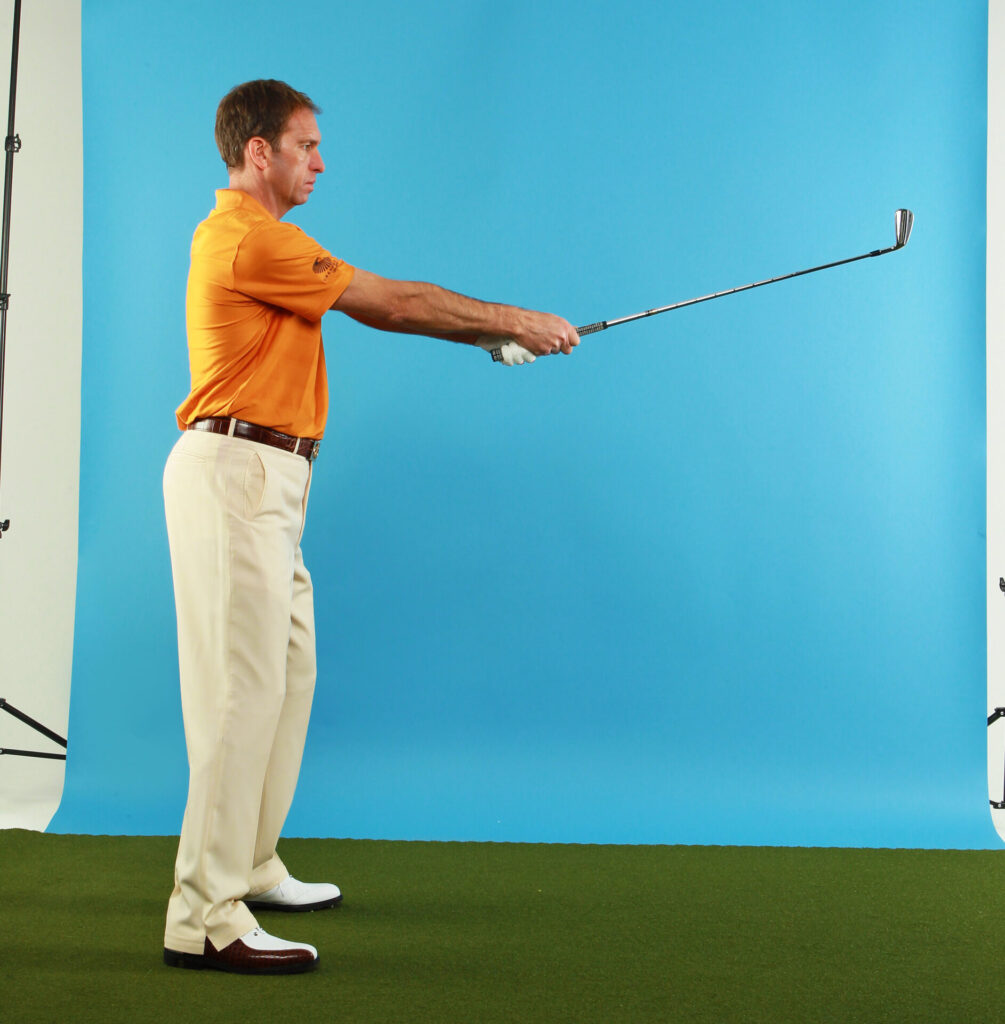
▪ Imagine a plane line, level with the horizon that the clubhead will track throughout the motion.
▪ Start with gentle swings, simply by being aware of where your clubhead travels in relation to the horizontal line. Does it stay on it? Go above? Maybe below? (image below)
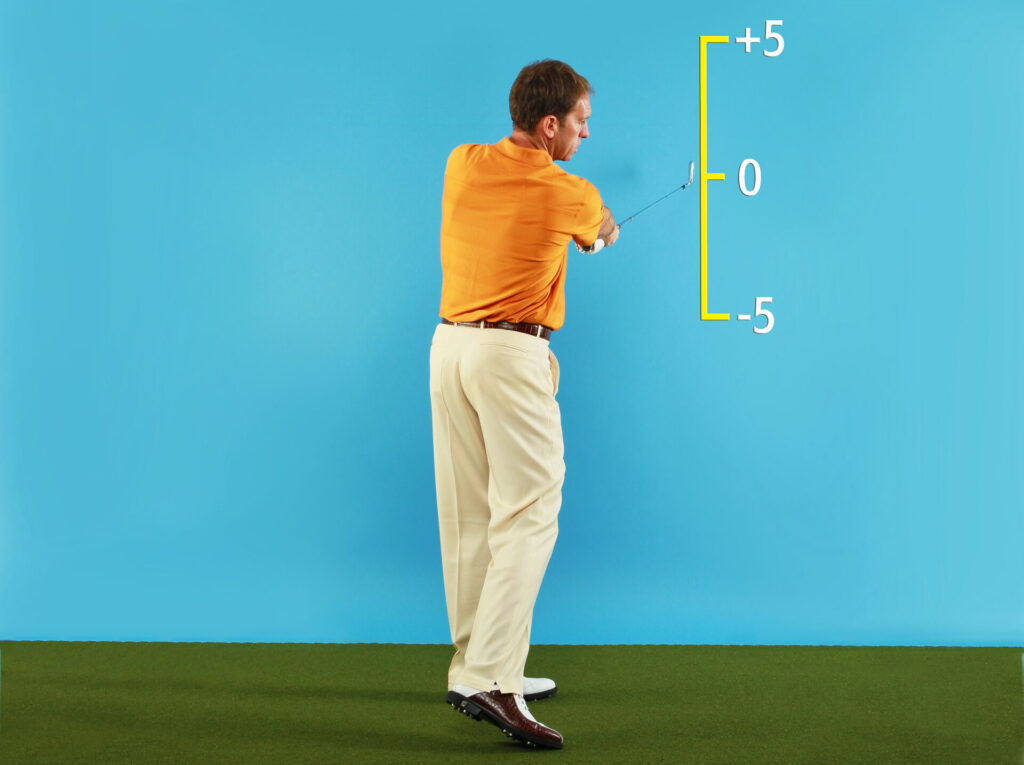
▪ If necessary, after a few swings adjust the clubhead’s height to match this horizontal plane line. Keep your focus on the clubhead and let your body respond. Gradually, you can develop speed as you improve your movement.
Phase 2:
After a few minutes swinging the club baseball-style, you will have experienced some new feelings in your swing. DON’T try and lock those feelings in, just keep your focus on the clubhead staying on the circle.
It’s now time to move the clubhead towards the ground …
▪ Lower your posture to swing the clubhead at about knee high. This will gradually help bring your orientation back to normal. (image below)
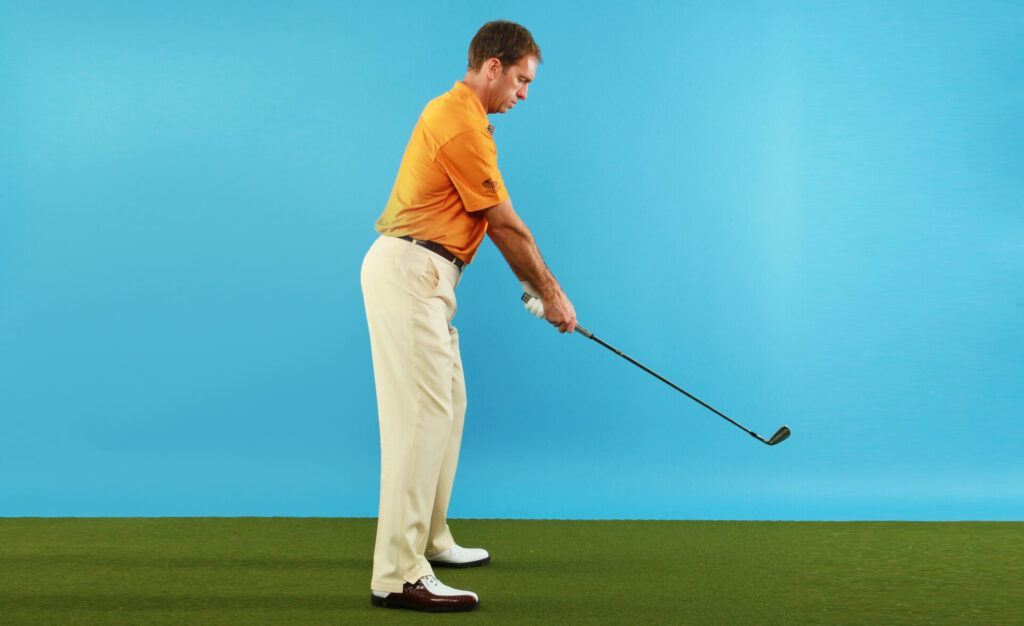
▪ During the knee-high swings, imagine the big circle has changed its angle. Your job remains the same – to keep the clubhead on it; this way you will experience the same new feelings you had at chest high.
Once you are happy you can maintain your focus on the clubhead tracking this big circle, it’s time to lower the circle again…
▪ Put a tee peg in the ground, so your orientation is back to normal, BUT keep your focus on the clubhead tracking the perimeter of this large, outer circle. (image below)
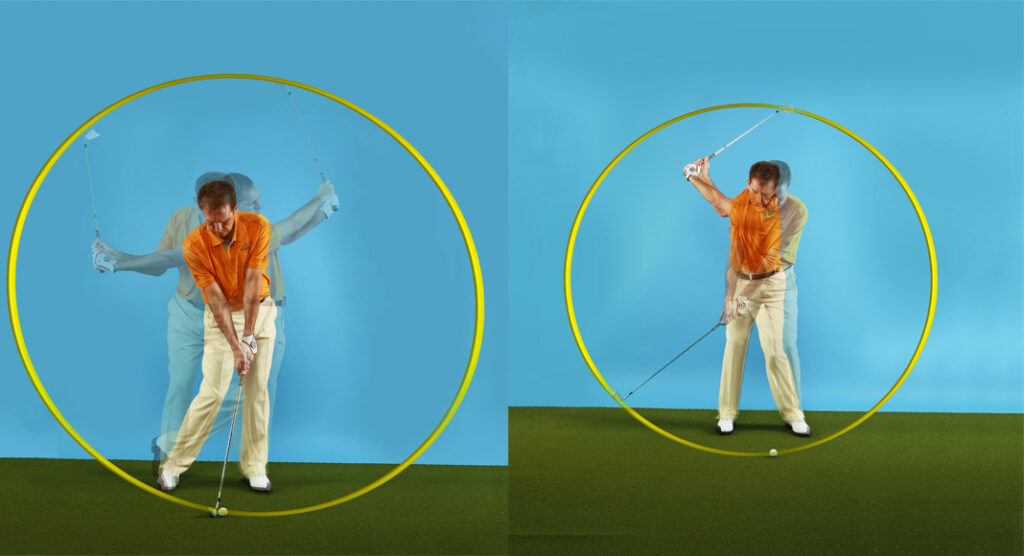
▪ Even though you are now striking a tee, keep your focus on the clubhead tracking the circle and let your body respond.
Finally, of course, it is time to introduce the ball, but, after every 5-10 shots, go back through the sequence above to ensure you are reminding yourself of these principles.
As you develop this swing with the focus on the clubhead, you will naturally improve the timing of the circles mentioned above.
▪ Clubhead (outer circle)
▪ Hands (middle circle)
▪ Body (inner circle)
The clubhead is going to move the fastest, the hands/arms next fastest, and body the slowest.
Now, stop and think about this for a moment. As obvious as it might be, just becoming conscious of this fact could be a helpful idea. To help, I have included an image (below) of the relative speeds that will help you to appreciate the order of things.
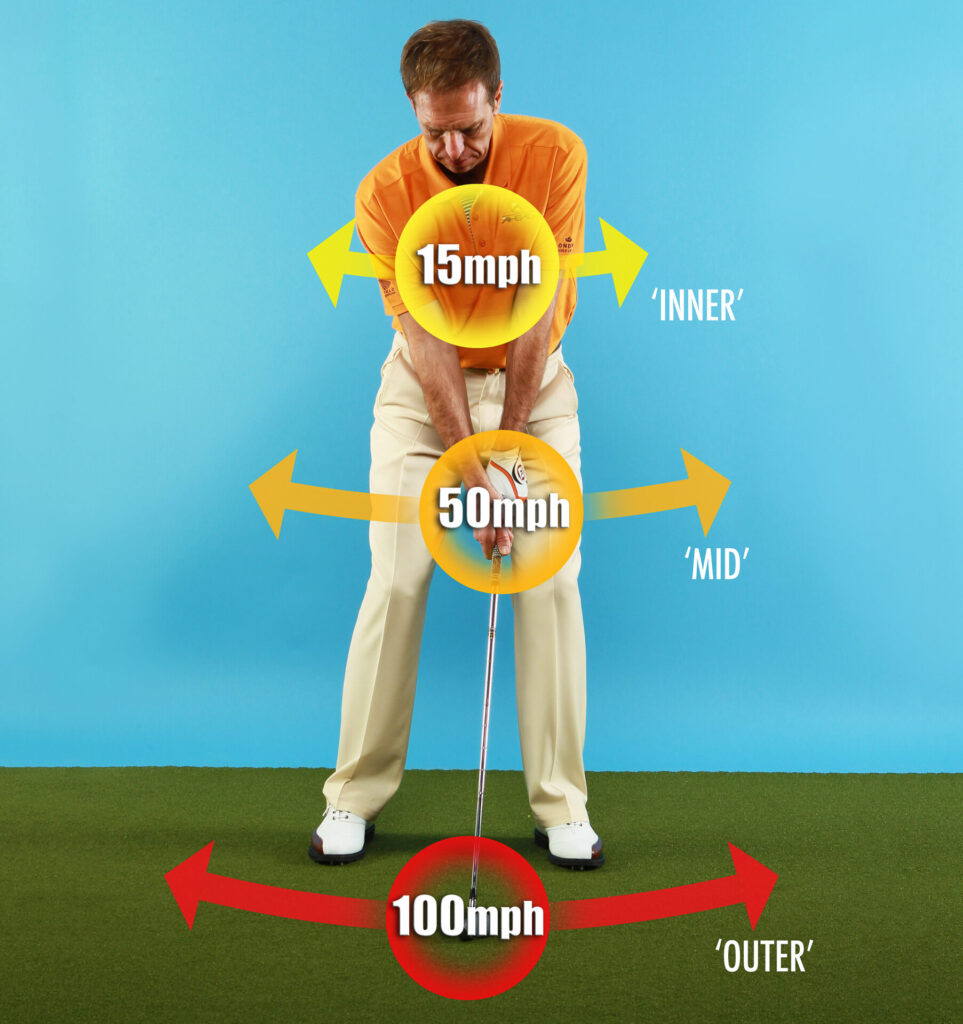
A common problem for many amateur players is the over-use of their body in an effort to move the clubhead, which only slows the club down. So, whilst it is true the body moves the club, in practice it can be an ineffective thought. Many golfers are far better to focus on the club and let everything inside take its timing from the club.
To get a sense of how little the body does, think about how far your left shoulder travels from set up to the top of the swing … it’s about 12 inches? That’s the extent of your shoulder movement – quite shocking, isn’t it? Might you see the golf swing differently when you realise that your body only moves 12 inches to complete the backswing!
Maybe it’s time to ease up, and don’t try to muscle it too much with the bigger muscles. As a result, your arms and hands will have the freedom to swing the clubhead to maximise that speed and acceleration.
If you have any questions or would like to find out more about my coaching in the Algarve, visit www.scottcranfield.com or contact me on [email protected]
For more tips to help your golf, visit www.facebook.com/intuitivegolf










